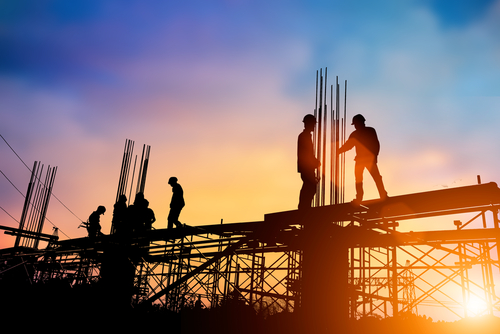In all likelihood, you’ve noticed—and participated in—the shift toward green facility management over the recent years. One overlooked aspect of sustainability is keeping things green even before a facility starts being used. By ensuring new facilities are built with sustainable principles, they are better suited to fit in with existing infrastructure.

While it can be challenging to design and build eco-friendly buildings, there are many opportunities to streamline the process—and one of the most vital aspects of doing so is picking the right materials.
The Issue of Embodied Carbon
There are various challenges to creating environmentally friendly buildings. To better understand the importance of materials and why they’re a focus, get to grips with embodied carbon.
Embodied carbon refers to the greenhouse gas emissions in building projects during the upstream phase of building projects. In short, everything that happens when developing a facility up until the point of its intended use. Everything from material extraction through production transportation can potentially generate harmful emissions. Facility project managers are responsible for reducing this aspect of the footprint.
Some of the steps construction businesses and facilities managers can take to achieve this are rooted in adjustments that protect infrastructure from the effects of climate change. For instance, safeguarding machinery from overheating in higher temperatures also improves the efficiency of the equipment, in turn minimizing unnecessary waste and emissions. Even choosing effective and energy-efficient lighting for construction sites helps make sites more climate-resilient and eco-friendly. Among the infrastructural elements that help facility construction to reduce embodied carbon, though, is the choice of materials.
Materials are among any large construction project’s most damaging and resource-heavy aspects. Greenhouse gases are emitted from every part of the construction process. From steel smelting to the cars employees drive, the sheer complexity of the operation produces a great deal of pollution. Because of this, there are plenty of opportunities to improve efficiency and sustainability. By finding material alternatives that are greener, construction and facilities managers have the chance to make a positive difference.
Advanced Eco-Friendly Materials
Different advanced materials offer various environmental advantages. It’s worth exploring what types of ecological priorities certain materials can serve so you can make more informed decisions about your projects.
Some of the areas to consider include the following:
Easier Transportation
Materials transport is a significant issue in embodied carbon reduction. Heavy components—like steel or concrete—use more fuel to transport to sites and create higher emissions. One advanced eco-friendly material that offers a viable alternative here is cross-laminated timber (CLT). This engineered wood product is lighter and easier to transport than many traditional materials. As a result, the transportation pressure tends to be reduced. Not to mention that producing trees for CLT can support carbon sequestration, where CO2 is absorbed by the wood during the growth cycle, leading to a more holistically eco-friendly impact.
Friendlier Composition
There’s continued development of composing large-scale construction materials in ways that have minimal environmental impact. After all, cement production is horrible for the environment and is responsible for around 8% of global emissions. Low-carbon concrete is an excellent alternative, wherein fly ash, slag, and silica fume are added to help bolster concrete through long-term resistance to sulfate attacks. As a result of this added durability, construction requires less concrete overall. In addition, more companies are also incorporating carbon capture technology into the concrete formula, trapping the CO2 produced during production.
Considering the Future
The state of eco-friendly materials is developing all the time. These advancements are great for facilities and construction companies committed to reducing embodied carbon. By keeping a close eye on emerging materials, you can be an early adopter of processes that positively impact the planet, your facility, and the community.
The future of advanced materials is largely being driven by trending technological innovations. Tools like artificial intelligence (AI) are gradually starting to be utilized to optimize material production processes. The software can make suggestions that reduce bottlenecks and errors by analyzing data and minimizing emissions. 3D printing is another trending technology leading the future of advanced and eco-friendly construction materials. By producing materials and printing entire buildings on-site, construction businesses can significantly reduce the emissions released in transporting and manufacturing materials.
Additionally, significant advances are being made in bio-based composites. These are building materials that are made from renewable organic sources. For instance, plant fibers, fungi, and algae are already being earmarked as innovative alternatives to synthetic construction products. These renewable and biodegradable products address the embodied carbon before a facility’s use and lead to environmentally friendly disposal at the end of a building’s lifespan.
Conclusion
The rise of green construction materials indicates a greater commitment to community sustainability. As a facilities manager, by collaborating with construction professionals to choose the most appropriate materials and keeping an eye on future developments, you’re setting an excellent foundation for a green and durable building. Some intelligent decisions now allow for a positive influence for years to come.
Miles Oliver is an independent writer with a background in business and a passion for tech, news, and simply helping people live happy and fulfilled lives. He has lived and traveled all over the United States and continues to expand his awareness and experiences. When he is not writing, he is most likely mountain biking or kicking back with a cup of tea.
